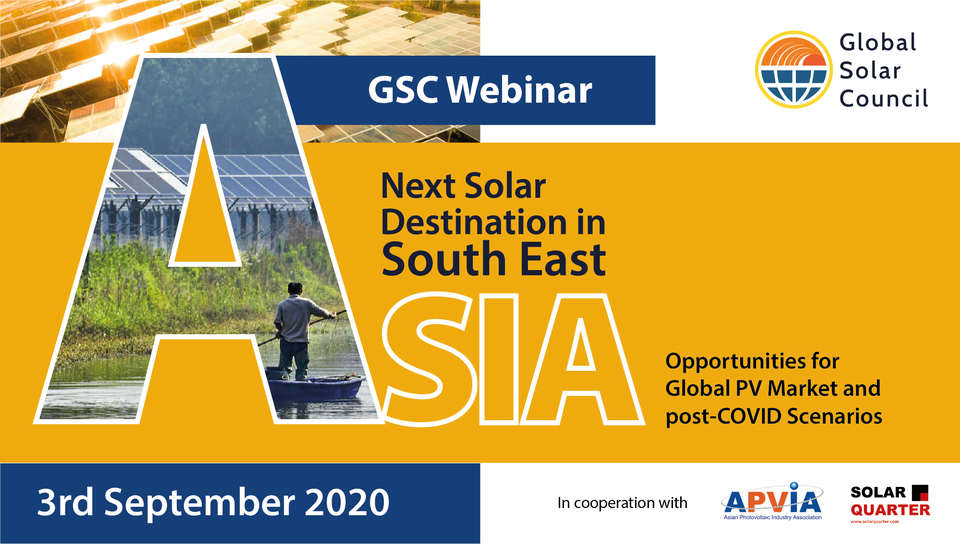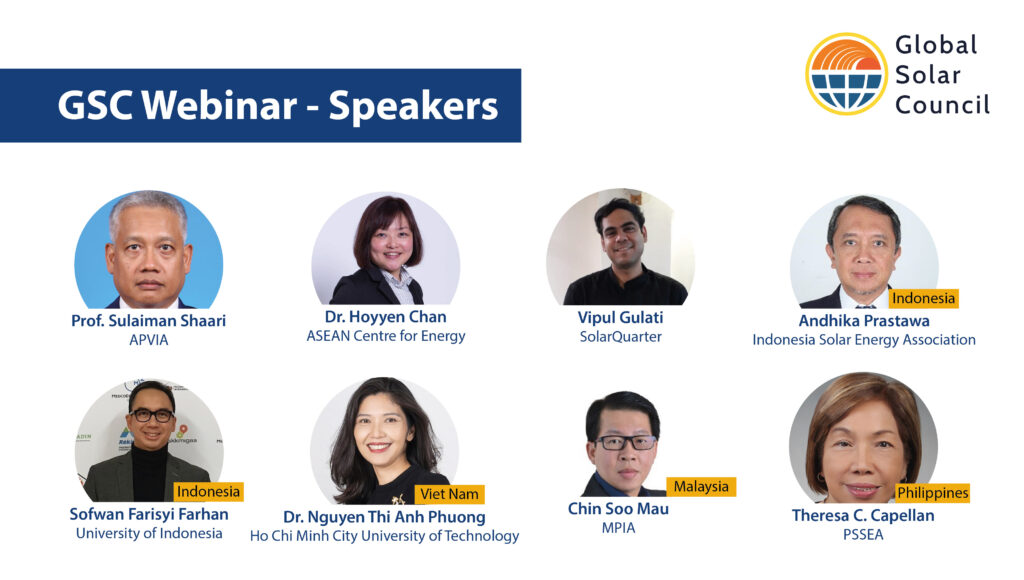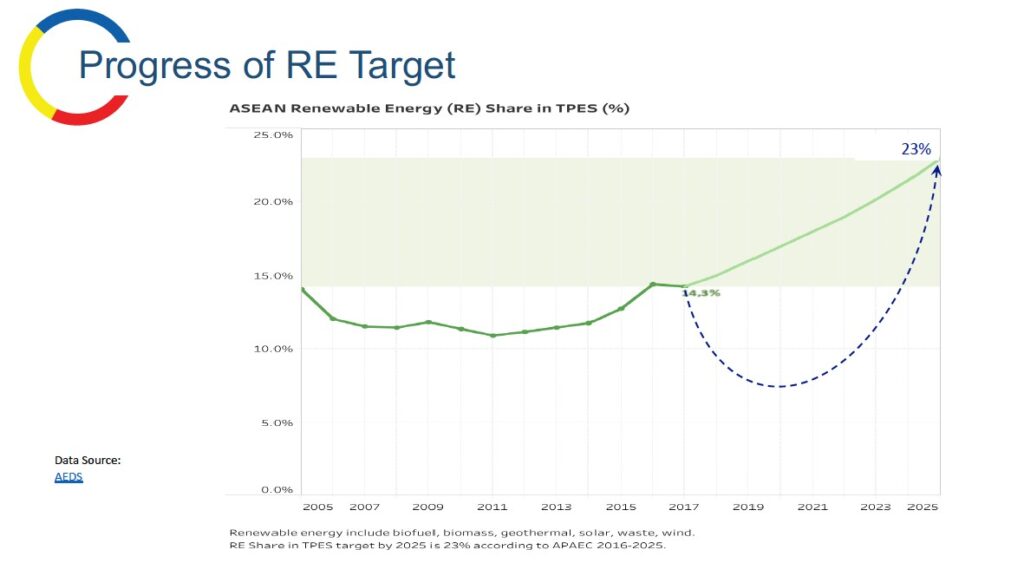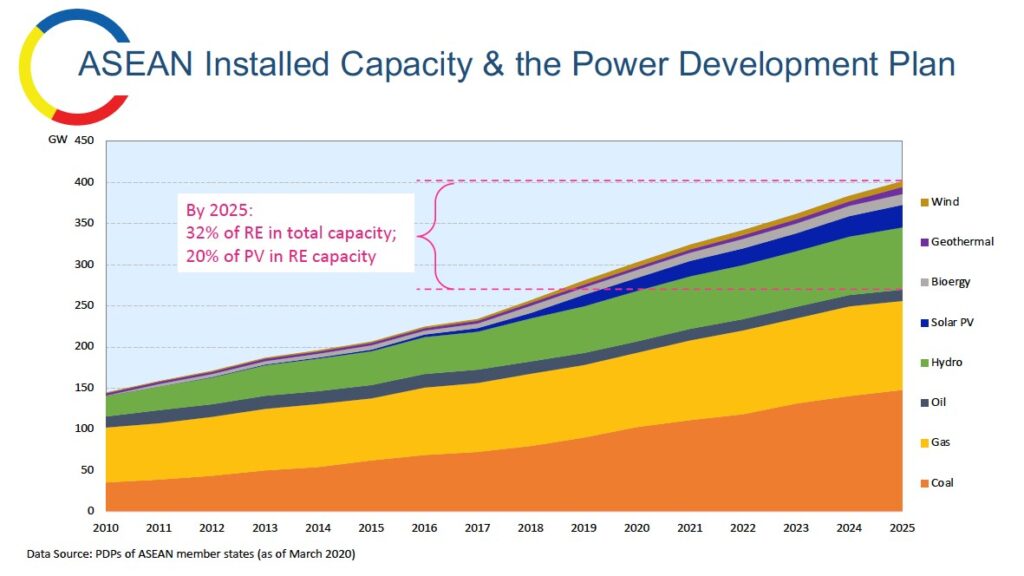Member/Partner News, Press Release
Next solar destination in South East Asia: GSC webinar highlights regional PV opportunities and country outlooks

The potential for South East Asia’s solar PV markets is forecast to be close to 35 GW by 2024 as investment in solar energy is driven by strong government policies and some markets are now beginning to be developed with little or no government support.
Despite the vast opportunities, the main countries in this region are following different trajectories and are at different points in the evolution of the sector: while Vietnam and Malaysia have seen explosive growth recently and even figured among the world’s top markets in terms of newly installed capacity, large economies such as Indonesia still have a relatively low penetration of PV, given their potential. The outlook for different technologies includes large-scale installations, rooftop solar and even a huge pivot to floating PV in countries such as the Philippines.
To better understand the situation in South East Asia and analyse the regional and country dynamics, the Global Solar Council brought together expert observers, academics and industry representatives in a webinar, organised in collaboration with the Asian Photovoltaic Industry Association (APVIA) and SolarQuarter.

Prof. Sulaiman Shaari, APVIA Secretary General and professor at the Faculty of Applied Sciences, Universiti Teknologi MARA in Shah Alam, Malaysia, told the meeting: “For the past decade, we clearly see that renewable energy resources, such as solar PV, is a major player in the energy industry around the world. South East Asia, being a dynamic region that it is, is also experiencing this new twist i.e. a transition into clean energy via renewable energy resources. This trend is much welcome by the countries in the region. One can easily appreciate, the unique opportunities in using PV in SEA, i.e. simply vast, naturally.”
The South East Asia initiative is part of a focus provided by the Global Solar Council on emerging solar markets and followed a webinar focused on the situation in Latin America. Another event dealing with Africa is planned for end-October.
Gianni Chianetta, chairman of the Global Solar Council, commented: “The Global Solar Council’s mission is to promote the rapid adoption of solar energy globally, through market development, partnerships and education. Emerging markets such as those in South East Asia are incredibly important from this perspective and shown how clean energy sources such as solar can rapidly emerge and play a crucial role in the sustainable development of these countries.” In presenting the policy frameworks currently in place in South-East-Asia, Dr. Hoyyen Chan, Senior Research Analyst at the ASEAN Centre for Energy (ACE) in Jakarta, Indonesia, explained that the ASEAN 2015-2025 Plan of Action for Energy Cooperation (APAEC) set an aspirational target for increasing the component of renewable energy in total primary energy supply to 23% by 2025 (including large-scale hydro). However, as of 2017 (latest data available), renewables had made little progress towards that level, remaining at 14.3%, making the coming years critical for the region.

Yet countries remain optimistic, she added: the Power Development Plans of ASEAN countries as of March 2020 highlight a strong contribution from PV through 2025, although fossil fuels, and coal in particular, remain dominant. The plans indicate a share of renewable energy rising to 32% by that year with solar PV accounting for a 20% share of renewables.

This regional perspective was illustrated with country-level perspectives provided by five expert speakers:
- Andhika Prastawa, Chairman, Indonesia Solar Energy Association
- Sofwan Farisyi Farhan, Advisory Board Member of Mechanical Engineering, University of Indonesia
- Dr. Nguyen Thi Anh Phuong, Board Member & Lecturer of MIS, Entrepreneurship & Innovation, Ho Chi Minh City University of Technology (HCMUT); Chief Executive Officer, TONA Syntegra Solar, Viet Nam
- Chin Soo Mau, President, Malaysian Photovoltaic Industry Association (MPIA)
- Theresa C. Capellan, Chairperson, Philippine Solar and Storage Energy Alliance (PSSEA)
As for the challenging market situation of 2020 given the challenges posed by the COVID-19 pandemic, Prof. Shaari stated: “South East Asia has to continue to progress, and we, the clean energy players and industry people, can also be considered as front liners combatting COVID-19 in the economic sense. One strategic way of moving on from this pandemic’s impact is by ramping up the use of PV to kick start and sustain the economy.”
Discover all Global Solar webinars with complete videos and presentations for download.
![Global Solar Council [logo]](/static/images/gsc-logo-horizontal.svg)